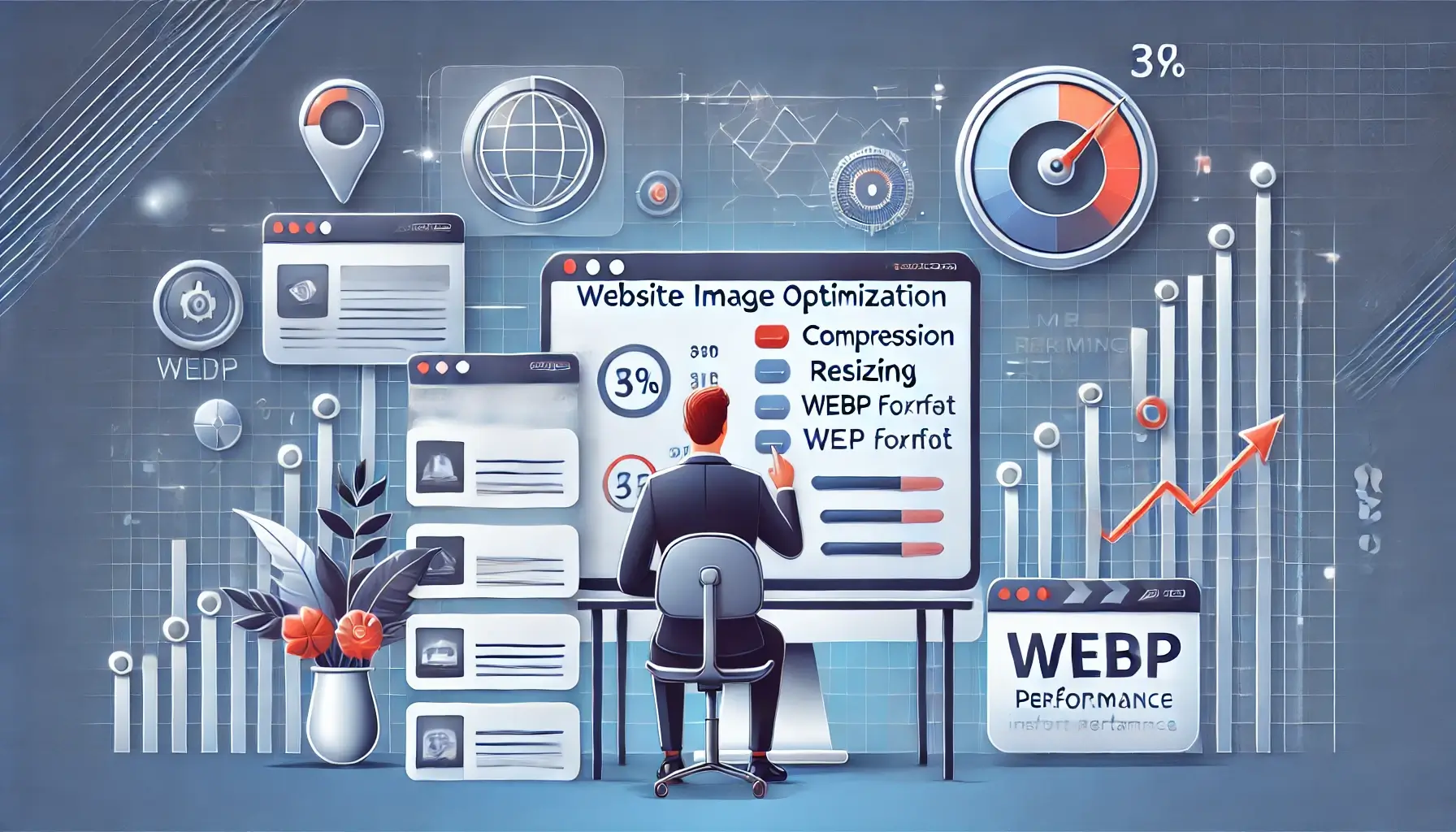How to Optimize Website Images Without Sacrificing Quality

Image optimization is a critical part of website performance, ensuring faster loading speeds while maintaining high visual quality. Unoptimized images can slow down websites, negatively impacting user experience and SEO rankings. This guide covers the best methods to optimize images without sacrificing quality.
1. Choose the Right Image Format
Different image formats serve different purposes, and selecting the right one can significantly affect optimization.
- JPEG: Best for photographs and complex images with many colors.
- PNG: Ideal for images requiring transparency but larger in size.
- WebP: Offers high-quality compression, reducing file sizes while maintaining visual integrity.
- SVG: Best for logos and vector graphics, as they are resolution-independent.
Using modern formats like WebP can reduce file sizes by up to 30% compared to JPEG and PNG. Read our article on The Importance of Regularly Updating Website Plugins and Themes to ensure compatibility with modern image formats.
2. Resize Images to Fit Display Needs
Uploading oversized images wastes bandwidth and slows down websites. Resize images to match the exact display dimensions required.
- For full-width images, keep dimensions under 1920px wide.
- Thumbnails and smaller images should be scaled appropriately to their containers.
- Use responsive image techniques such as the
srcsetattribute to serve different sizes for different devices.
Use tools like Adobe Photoshop or GIMP to manually resize images before uploading.
3. Compress Images Without Losing Quality
Compression reduces image file size while maintaining visual quality. There are two types:
- Lossless compression: Reduces file size without quality loss (PNG, WebP lossless).
- Lossy compression: Achieves higher compression with minor quality loss (JPEG, WebP lossy).
Use online tools like TinyPNG and Squoosh for easy compression.
4. Enable Lazy Loading
Lazy loading delays loading off-screen images until they are needed, improving initial page speed. Most modern CMS platforms support lazy loading natively.
For WordPress, add the following code to functions.php:
add_filter('wp_lazy_loading_enabled', '__return_true');For manual implementation, use the loading="lazy" attribute:
<img src="image.jpg" alt="Optimized image" loading="lazy">Learn more in our guide on How to Improve Website User Experience.
5. Use a Content Delivery Network (CDN)
CDNs distribute images across multiple servers worldwide, reducing latency and improving performance. Popular CDNs for images include:
6. Optimize Images for SEO
Image SEO helps search engines understand your images. Best practices include:
- Using descriptive file names (e.g.,
optimized-website-image.webpinstead ofIMG1234.jpg). - Adding alt text for accessibility and SEO.
- Using structured data like ImageObject schema for better search visibility.
7. Regularly Audit and Optimize Images
Over time, image files can accumulate, leading to unnecessary bloat. Conduct regular audits using tools like Google PageSpeed Insights to identify oversized or unoptimized images.
Ensure your website remains in peak performance with our guide on How to Conduct a Website Audit.
Conclusion
Optimizing website images is essential for improving speed, SEO, and user experience. By using the right formats, compressing images, enabling lazy loading, and leveraging CDNs, you can achieve high performance without sacrificing quality. For professional assistance in optimizing your website images, contact WebCareSG.
Related WebCare Solutions
How to Fix Slow Website Performance: A Comprehensive Guide
Struggling with a slow website in Singapore? Learn how to enhance performance and user experience tailored to the local market.
What to Do When Your Website Shows a 'Not Secure' Warning
Learn how to resolve 'Not Secure' warnings on your website. Improve trust and security for your visitors with these expert tips.
Why DIY Website Fixes Can Sometimes Make Things Worse
Discover the hidden risks of attempting DIY website fixes and learn why it's often safer and more efficient to rely on professional website maintenance services.
Ready to get started?
Focus on your business while we fix your website. Contact WebCareSG today for fast, reliable solutions!
Whatsapp us on


